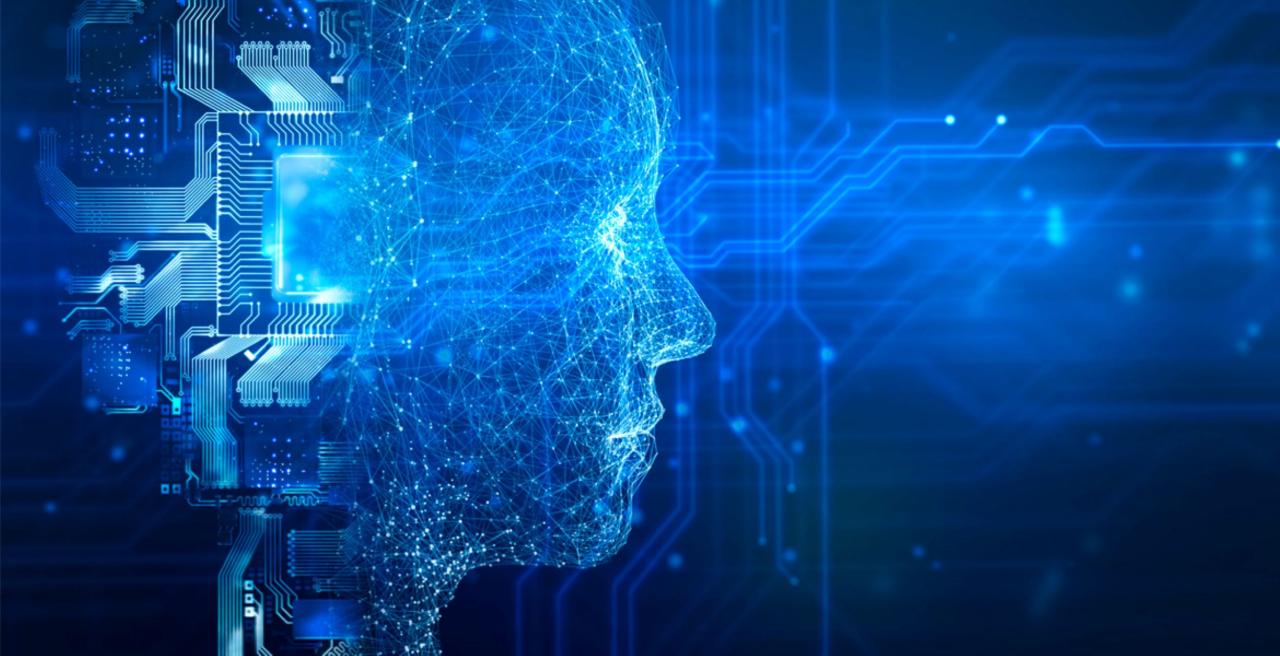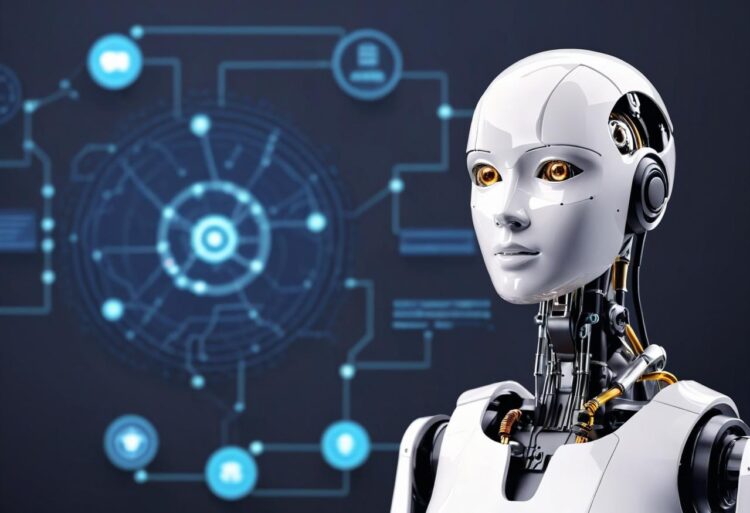The year 2025 marks a definitive pivot in the corporate world, moving from cautious AI adoption to full-scale AI-driven workflow redesign. The promise of Artificial Intelligence is no longer just about efficiency; it’s about fundamentally augmenting human capability to deliver higher value, faster. The simplistic notion of “AI Automates Team Tasks” is now a powerful reality, unlocking unprecedented levels of productivity, precision, and strategic focus across all business functions. This extensive article will explore the deep integration of AI into team tasks, detailing the mechanisms, the high-value areas of impact, the necessary strategic shifts, and the critical importance of a human-centric approach to maintain both high performance and workplace security in this new era.
The true significance of 2025’s AI trend lies not in replacing humans, but in creating “Agentic AI”—intelligent systems that act as virtual co-workers, autonomously executing multi-step processes. This shift redefines the very structure of work, moving knowledge workers away from low-value, repetitive tasks toward roles demanding creativity, complex decision-making, and strategic oversight.
1. The End of Mundane Tasks

AI agents are now highly proficient at handling the administrative “friction” that historically slowed down team productivity. High-CPC industries like Finance, Legal, and Enterprise Software are seeing immediate cost savings and efficiency gains.
Specific tasks now fully delegated to AI agents include:
- Data Aggregation and Synthesis: AI autonomously searches, compiles, and summarizes market research reports, financial performance metrics, and complex legal documents.
- Workflow Triggering and Handoff: Automatically updating project statuses, assigning next steps to the correct team member based on task completion, and sending real-time notifications.
- Initial Content Drafting: Generating first-drafts for emails, technical documentation, meeting agendas, and even basic marketing copy that aligns with established brand voice guidelines.
- Real-Time Meeting Documentation: AI tools transcribe meetings, summarize key decisions, identify and assign action items, and distribute summaries immediately without human intervention.
- Predictive Scheduling and Resource Allocation: Analyzing team workloads, skill sets, and project dependencies to suggest optimal task distribution and proactively flag potential resource bottlenecks weeks in advance.
2. The Decision Engine

Beyond simple automation, 2025’s AI acts as a sophisticated decision support engine. By analyzing vast datasets in real-time—far exceeding human processing capacity—AI provides strategic insights that inform critical business decisions.
Key areas of AI-driven decision support:
- Predictive Risk Management: Analyzing project schedules and historical data to forecast the probability of delays or cost overruns, allowing managers to intervene proactively.
- Customer Sentiment Analysis: Monitoring communication channels (emails, chat, social media) to instantly gauge client satisfaction and prioritize urgent support or sales follow-ups.
- Optimized Marketing ROI: Continuously monitoring advertising campaign performance across channels (high CPC areas like Google Ads and social platforms), dynamically adjusting bids, ad copy, and targeting parameters for maximum return on investment.
Technological Pillars: The 2025 AI Collaboration Stack
The success of AI integration is dependent on a sophisticated, interconnected technological infrastructure. The modern AI Collaboration Stack centers on two critical components: Large Language Models (LLMs) and Deep Systems Integration.
1. Agentic AI and Large Language Models (LLMs)
Generative AI, powered by frontier LLMs, provides the intelligence layer for task automation. These models are moving beyond simple text generation to performing multi-step reasoning and complex actions.
The functional impact of advanced LLMs:
- Custom Agent Building: Businesses are using low-code/no-code platforms to create custom AI agents tailored to specific, highly-regulated processes (e.g., Compliance, Financial Auditing).
- Knowledge Retrieval and Synthesis (RAG): AI agents efficiently comb through fragmented internal knowledge bases (SharePoint, CRM, Slack history) to retrieve precise answers and generate contextual reports, significantly reducing the “time spent searching” for knowledge workers.
- Contextual Workflow Execution: The agents understand context. For example, an AI agent can recognize a client email marked “Urgent,” identify the relevant project files, draft a response using the client’s preferred tone, and automatically notify the project manager—all without explicit prompting.
2. The Integration Imperative: Unifying the Tech Stack
A fragmented collection of tools (email, chat, project management, CRM) is the primary enemy of productivity. The 2025 trend is defined by deep, bidirectional integration where AI acts as the unifying layer.
Core features of AI-integrated platforms:
- Seamless Data Flow: Ensuring data moves instantly and accurately between the CRM (Salesforce, HubSpot), the project management suite (Asana, ClickUp), and the communication platform (Slack, Teams).
- Single Pane of Glass Experience: Platforms like Notion AI or the Microsoft Copilot suite aim to provide a unified workspace where employees interact with data and tasks from multiple systems without ever leaving the primary application.
- API-First Design: The most competitive AI tools are built with robust APIs, enabling bespoke connections that ensure every piece of enterprise data—from code repositories to inventory lists—can be accessed and acted upon by AI agents.
Strategic Business Impact: Maximizing High CPC Value
For businesses targeting high CPC (Cost-Per-Click) keywords—which typically relate to complex, high-value B2B services like Enterprise Software, Financial Services, and Legal Consulting—AI automation is a strategic lever for profitability.
1. Faster Sales Cycles and Proposal Generation
The time required to move from initial lead contact to a formal proposal is a critical metric. AI dramatically shortens this cycle.
AI’s role in accelerated sales and proposals:
- Automated Lead Qualification: AI scores incoming leads based on historical conversion data, assigning them instantly to the correct sales representative with a pre-populated summary of the client’s potential needs.
- Proposal Drafting: Generative AI ingests the client requirements (from meeting notes and RFPs), combines them with product data, and drafts a comprehensive, compliant, and highly personalized proposal document.
- Contract Review and Compliance: AI agents rapidly scan draft contracts against established legal guidelines, flagging deviations or risks, ensuring the sales process is compliant and fast. This is a huge value driver in high-stakes fields.
2. Strategic Resource Optimization
By automating routine functions, AI redirects valuable human capital—especially highly-paid subject matter experts—toward innovation and core business strategy.
Benefits of optimized resource allocation:
- Focus on Innovation: Senior developers and engineers spend less time writing boilerplate code (now handled by tools like GitHub Copilot) and more time architecting novel solutions or tackling complex legacy issues.
- Reduced Administrative Overhead: Project managers shift their focus from manually tracking task statuses and sending reminders to mentorship, strategic planning, and stakeholder engagement.
- Improved Accuracy and Compliance: Automation reduces human error in data entry, reporting, and regulatory compliance, directly minimizing the financial risk associated with errors in complex business processes.
The Human-AI Partnership: Navigating the Cultural Shift
Implementing AI on this scale is not just an IT project; it is a cultural transformation. Successful organizations in 2025 prioritize the integration of AI in a way that is ethical, secure, and beneficial to the employee experience.
1. The Critical Role of AI Governance and Security
The increased automation and data synthesis mandate stringent security protocols, particularly for companies handling sensitive client or financial data.
Essential governance considerations:
- Data Access Control: Implementing strict, role-based access to enterprise data, ensuring AI agents only retrieve and process information they are authorized to handle.
- Bias Mitigation: Actively auditing AI models to identify and correct any inherent biases in task assignment, hiring processes, or customer interactions to ensure fairness and compliance.
- Audit Trails and Transparency: Maintaining a detailed, unchangeable record of every AI-executed task and decision for compliance, troubleshooting, and accountability.
2. Upskilling and the New Work Identity
The shift requires upskilling the workforce, focusing on the new meta-skill of working with AI. Employees must become expert “AI Prompters” and “AI Overseers.”
New roles and required skills:
- Prompt Engineering: The ability to craft precise, detailed instructions for Generative AI to ensure the output is accurate, on-brand, and highly contextual.
- AI Workflow Supervision: The skill to monitor automated processes, identify points of failure or inefficiency, and iteratively improve the AI agent’s performance.
- Data Synthesis and Interpretation: Moving away from simple data collection to interpreting the complex patterns and strategic insights surfaced by the AI.
Conclusion
The narrative surrounding “AI Automates Team Tasks” in 2025 transcends a simple story of cost-cutting; it is the genesis of a fundamentally more intelligent and dynamic workplace. The integration of Agentic AI, driven by sophisticated LLMs and seamless enterprise platforms, has systematically liberated high-value personnel from the inertia of manual process.
This transformation delivers clear, measurable financial benefits, particularly for organizations operating in the high-stakes, high-CPC sectors. By drastically accelerating sales cycles, ensuring near-perfect compliance, and pivoting employee focus from administrative drudgery to strategic innovation, businesses are not just becoming faster—they are becoming smarter and more competitive.
The successful enterprise of 2025 views AI not as a third-party tool, but as the central nervous system of its operational strategy. The future of work is not about people vs. machines, but about a symbiotic human-AI partnership, one where human creativity sets the strategic direction, and machine precision executes the complex, high-volume operational tasks. This new frontier of intelligent work guarantees a sustained competitive advantage, higher profitability, and a more engaged, strategically-focused workforce, solidifying AI automation as the single most important technology investment for the modern, high-growth business.













